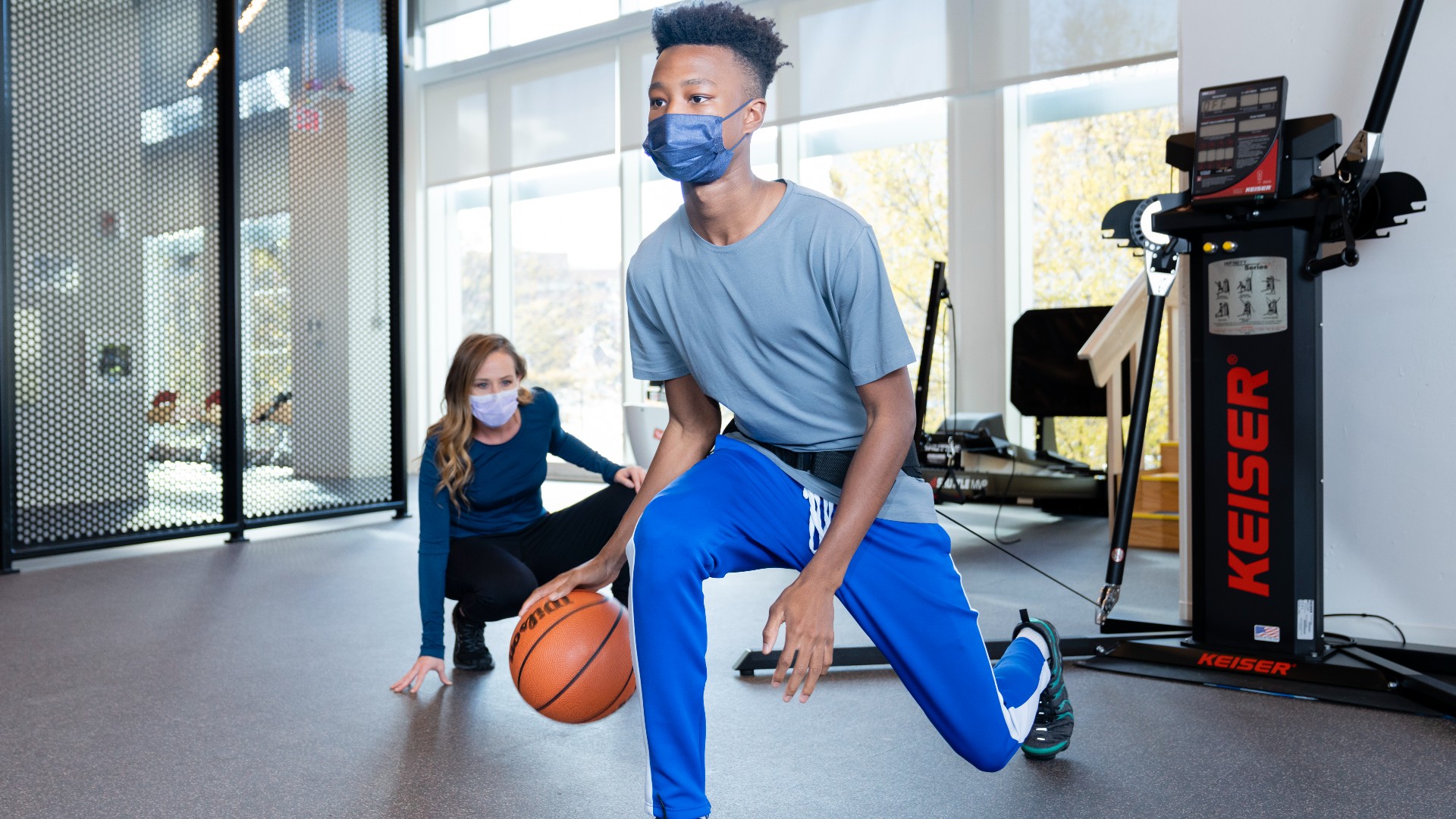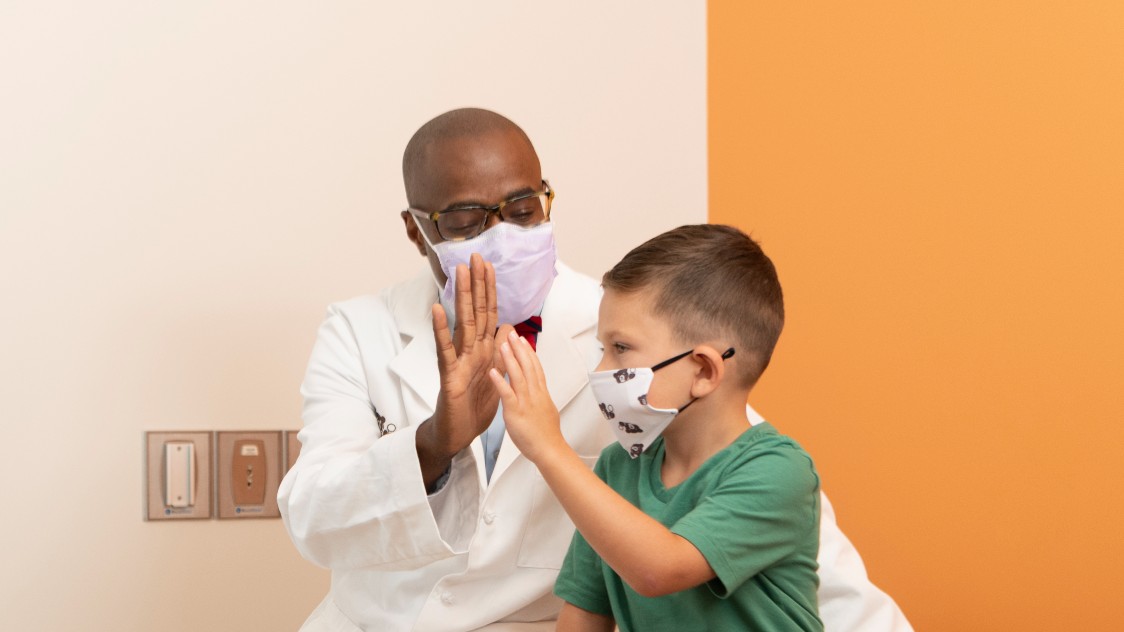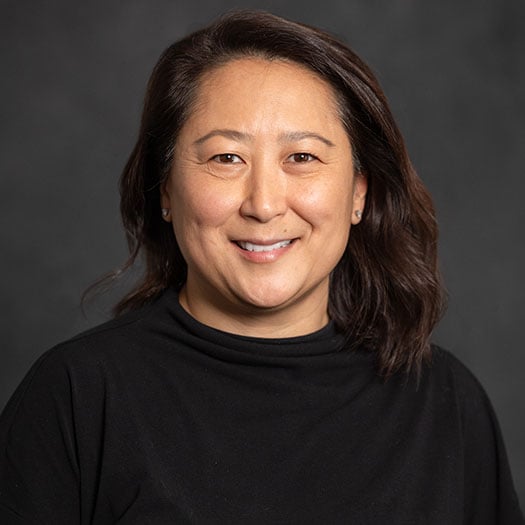Condition
Pediatric Ewing Sarcoma
Key points about Ewing sarcoma
- Ewing sarcoma is a rare group of cancers that usually occur in the bone, but can also occur in soft tissue.
- X-ray and other imaging tests may be used in diagnosing Ewing sarcoma. A biopsy is needed to make a definite diagnosis.
- Ewing sarcoma is treated with chemotherapy followed by surgery and/or radiation therapy. High-dose chemotherapy and stem cell transplant may be used in some children.
- Continuous follow-up care during and after treatment is necessary.
- Many complications can occur from the cancer and from the treatment. The complications may be short- or long-term.
Frequently Asked Questions
What is Ewing sarcoma?
Ewing sarcoma is a rare type of cancer. It’s most common in children and teens between the ages 10 and 19. It usually grows in bone, but it can also grow in soft tissue that is connected to the bone. This may include tendons, ligaments, cartilage or muscles.
Ewing sarcoma most often grows in:
- Bones of the legs, hips and pelvis, chest and arms
- Soft tissue of the torso, arms and legs
What causes Ewing sarcoma in children?
The exact cause of Ewing sarcoma is not known. The cancer may be caused by changes in the DNA of the cells. These changes are not passed on from parents to children. They happen by chance.
What are the symptoms of Ewing sarcoma in children?
Symptoms can occur a bit differently in each child. They can include:
- Pain around the site of the tumor that may come and go, but gets worse over time and with activity
- Swelling around the site of the tumor
- A lump (mass)
- A bone breaks for no known reason
- Fever
- Weight loss
- Feeling tired
The symptoms of Ewing sarcoma can be like other health conditions. Make sure your child sees a healthcare provider for a diagnosis.
How is Ewing sarcoma in children diagnosed?
Your child's healthcare provider will ask about your child's health history and symptoms. He or she will examine your child. Your child may be referred to a specialist. This may be a bone specialist (orthopedic surgeon) or a bone cancer specialist (orthopedic oncologist). Your child may have tests such as:
- X-ray. An X-ray uses a small amount of radiation to take pictures of bones and other body tissues.
- Blood tests. The blood may be tested to look for signs of Ewing sarcoma.
- CT scan. This test uses a series of X-rays and a computer to make detailed images of the body.
- MRI. This test uses large magnets, radio waves, and a computer to make detailed images of the inside of the body.
- Bone scan. A small amount of radioactive dye is injected into a vein. The whole body is scanned. The dye shows up in areas of bone where there may be cancer.
- Positron emission tomography (PET) scan. For this test, a radioactive sugar is injected into the bloodstream. Cancer cells use more sugar than normal cells, so the sugar will collect in cancer cells. A special camera is used to see where the radioactive sugar is in the body. A PET scan can sometimes spot cancer cells in different areas of the body, even when they can’t be seen by other tests. This test is often used in combination with a CT scan. This is called a PET/CT scan.
- Bone marrow aspiration or biopsy. Bone marrow is found in the center of some bones. It’s where blood cells are made. A small amount of bone marrow fluid may be taken. This is called aspiration. Or solid bone marrow tissue may be taken. This is called a core biopsy. Bone marrow is usually taken from the hip bone. This test may be done to see if cancer cells have reached the bone marrow.
- Tumor biopsy. A sample of the tumor is taken. It may be taken with a needle or by a surgical cut (incision). It is checked under a microscope for cancer cells. A biopsy is needed to diagnose sarcomas.
After a diagnosis of Ewing sarcoma, your child may have other tests. These help the healthcare providers learn more about the cancer. They will show how much and how far the cancer has spread (metastasized) in your child's body. A stage grouping is then assigned.
Stage groupings can have a value of 1 to 4. They are written as Roman numerals I, II, III and IV. The higher the number, the more advanced the cancer is. Letters and numbers can be used after the Roman numeral to give more details.
The stage of a cancer is one of the most important things to know when deciding how to treat the cancer. Be sure to ask your child's healthcare provider to explain the stage of your child's cancer to you in a way you can understand.
What are possible complications of Ewing sarcoma in children?
A child may have complications from the sarcoma or from treatment, such as:
- Infection or bleeding from surgery
- Loose or broken grafts or rods from limb-salvage surgery
- Hair loss, mouth sores, nausea, vomiting, diarrhea, increased infections, easy bruising and bleeding, and feeling tired from chemotherapy
- Burns, hair loss, nausea, diarrhea, poor bone growth, organ damage and new cancers from radiation
- Emotional and physical challenges from dealing with the tumor, surgery or other needed treatments
- Heart and lung problems
- Problems with growth and development
- Learning problems
- Changes in sexual development
- Problems with the ability to have children (fertility) in the future
- Return of the cancer
- Growth of other cancers
How is Ewing sarcoma in children treated?
Treatment will depend on the stage and other factors. The cancer can be treated with any of the below:
- Surgery. Surgery may be done to remove the tumor. Modern surgery methods are often able to preserve an arm or leg so that it does not need to be amputated. This is known as limb-salvage or limb-sparing surgery. Surgery is usually followed by chemotherapy or radiation therapy.
- Chemotherapy. These are medicines that kill cancer cells. They are usually given before surgery. They may also be given after surgery. Your child may have a port or catheter inserted in order to receive the medicines into a vein (IV). Chemotherapy is given in cycles with periods of rest.
- Radiation therapy. These are high-energy X-rays or other types of radiation. Radiation is used to kill cancer cells or stop them from growing. It may be used when a tumor is hard to completely remove with surgery.
- High-dose chemotherapy with a stem cell transplant. Young blood cells (stem cells) are taken from the child or from someone else. This is followed by a large amount of chemotherapy medicine. This causes damage to the bone marrow. After the chemotherapy, the stem cells are replaced. This treatment may be used when there is a high risk of cancer returning.
- Supportive care. Treatment can cause side effects. Medicines and other treatments can be used for pain, fever, infection and nausea and vomiting.
- Clinical trials. Ask your child's healthcare provider if there are any treatments being tested that may work well for your child.
With any cancer, how well a child is expected to recover (prognosis) varies. Keep in mind:
- Getting medical treatment right away is important for the best prognosis. Cancer that has spread is harder to treat.
- Ongoing follow-up care during and after treatment is needed.
- New treatments are being tested to improve outcome and to lessen side effects.
How can I help my child live with Ewing sarcoma?
A child with a Ewing sarcoma needs ongoing care. Your child will be seen by oncologists and other healthcare providers to treat any late effects of treatment and to watch for signs or symptoms of the tumor returning. Your child will be checked with imaging tests and other tests. And your child may see other healthcare providers for problems from the tumor or from treatment. Your child may need therapy to help with movement and muscle strength. This may be done by physical and occupational therapists.
You can help your child manage his or her treatment in many ways. For example:
- Your child may have trouble eating. A dietitian may be able to help.
- Your child may be very tired. He or she will need to balance rest and activity. Encourage your child to get some exercise. This is good for overall health. And it may help to lessen tiredness.
- Get emotional support for your child. Find a counselor or child support group can help.
- Make sure your child attends all follow-up appointments.
When should I call my child’s healthcare provider?
Call the healthcare provider if your child has:
- Symptoms that get worse
- New symptoms
- Side effects from treatment
Providers Who Treat Ewing Sarcoma

Robert Mikael Henshaw, MD
- Director, Orthopaedic Oncology
- Orthopaedic Surgeon
- Bone and Soft Tissue Tumor Specialist
Robert Mikael Henshaw, MD
Locations
Departments
Nita Louise Seibel, MD
Locations
Departments
Jul 22, 2024
Helping Maddie to Live Life to the FullestMaddie is a lively, creative teen who loves to act. Research at Children's National Hospital helps to ensure that her rare disease doesn"t upstage her big theater plans or her love of life.
Jun 27, 2024
Convenient Care for CharlotteWhen Charlotte was a toddler, a respiratory illness led to a diagnosis of a rare and dangerous immune deficiency called ICF syndrome. A bone marrow transplant at age 5 at Children’s National helped save her life.
May 20, 2024
Omid Conquers Fear with MusicOmid never liked going to the dentist. Dr. Aleger changed that with a little trust, and his favorite tunes.
Departments that Treat Ewing Sarcoma

Oncology
Our oncology (cancer) team provides personalized treatment plans for children with cancer, including access to clinical trials.

Orthopaedic Surgery and Sports Medicine
From sprains and strains to complex congenital conditions, Children’s National Hospital offers one of the most experienced pediatric orthopaedic practices in the nation with experience in treating all areas from head to toe.

Solid Tumor Program
Our Solid Tumor Program has a dedicated team of sarcoma experts who specialize in the newest treatments and clinical trials.






